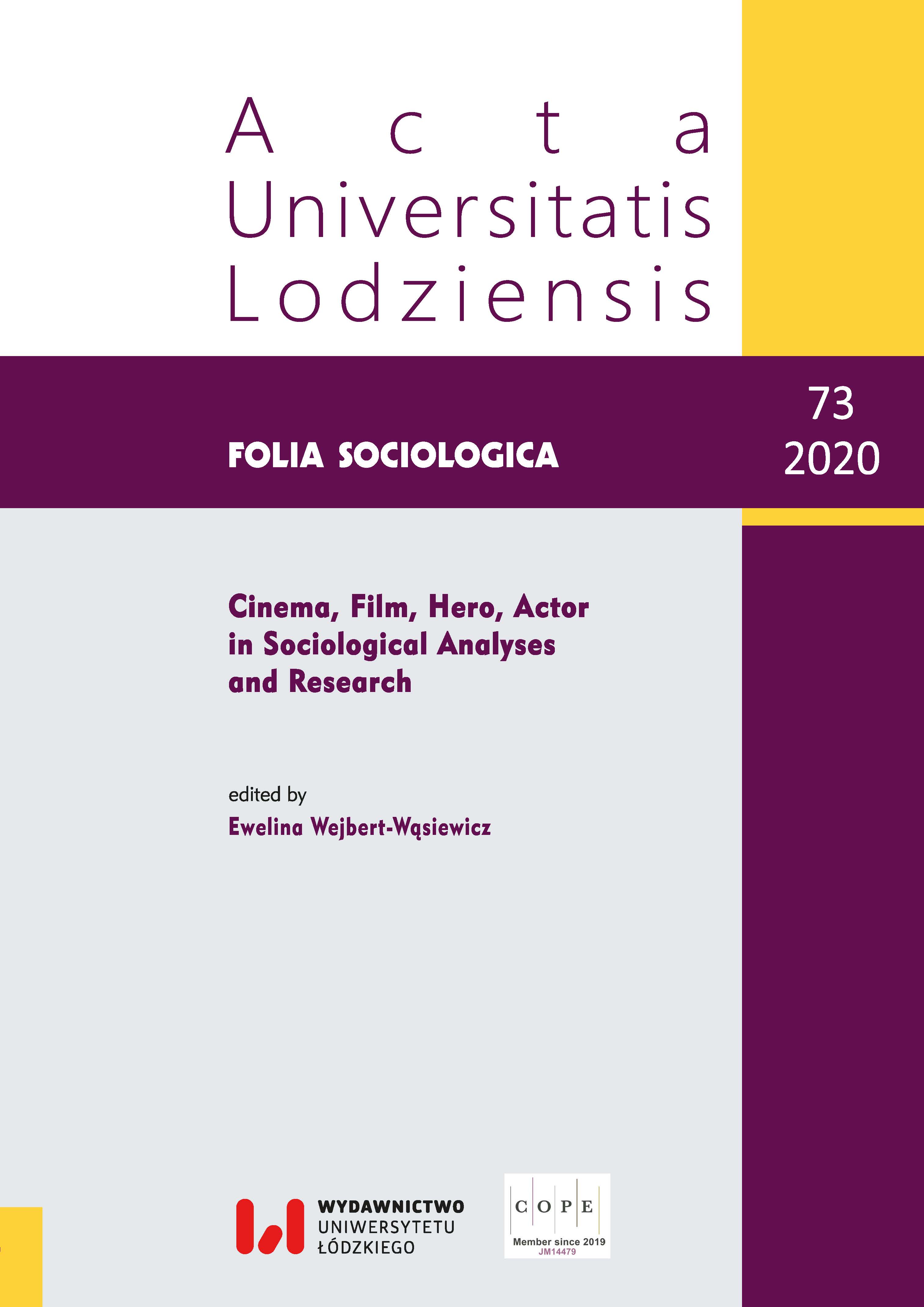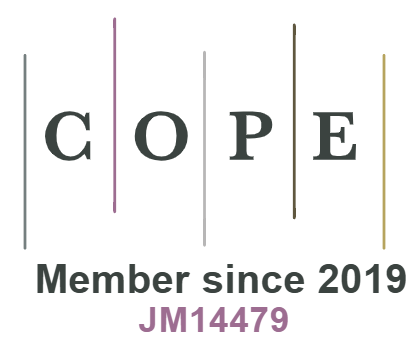American war movies. David Ayer’s Fury as mythologisation of war and soldiers
DOI:
https://doi.org/10.18778/0208-600X.73.02Keywords:
war, myth, popular culture, film protagonistAbstract
Both pop culture and modern Hollywood cinema are mainly intended for entertainment. American war films are not free from this vice. A researcher of culture should shun attempts to find hidden symbols, myths and flashes of meanings from distant traditional culture in such films. Contemporary popular mythologies do not represent the same mythical pattern that Eliade wrote about. Popular culture consists of ideas on various topics, borrowings, quotations and fragments of meanings, all patched together. In my view, however, Fury goes beyond pop culture and entertainment. After all, there is also good American war cinema and films that are not mindless borrowings or calques of carelessly patchworked pieces of pop culture. One can look at them and find certain cultural tropes and motifs known to specialists in humanities, such as an initiation journey, the symbolic language of eternal myths or archetypal figures of cultural heroes, all in a version transformed by popular culture, of course. The aim of my article is therefore to analyse David Ayer’s film from the perspective of a culture researcher who seeks cultural tropes and sources of the war hero myth in this cinematic work.
References
Anderson T. (2017), Tygrys. Legendarny czołg, transl. G. Siwek, Wydawnictwo RM, Warszawa.
Google Scholar
Caillois R. (1959), Man and the Sacred, transl. M. Barash, The Free Press, Glencoe.
Google Scholar
Cooper B.Y. (1998), Death Traps: The Survival of an American Armored Division in World War II, Presidio Press, Novato.
Google Scholar
Forstner D. (1990), Świat symboliki chrześcijańskiej, transl. W. Zakrzewska, P. Pachciarek, R. Turzyński, Instytut Wydawniczy PAX, Warszawa.
Google Scholar
Gennep A. (2006), Obrzędy przejścia, transl. B. Biały, Państwowy Instytut Wydawniczy, Warszawa.
Google Scholar
Ghiglieri M.P. (2001), Ciemna strona człowieka, transl. A. Tanalska-Dulęba, Wydawnictwo CiS, Wydawnictwo W.A.B., Warszawa.
Google Scholar
Howard M. (2007), Wojna w dziejach Europy, transl. T. Rybowski, Zakład Narodowy im. Ossolińskich – Wydawnictwo, Wrocław.
Google Scholar
Kępiński M. (2006), Mit, symbol, historia, tradycja – Gombrowicza gry z kulturą, Wydawnictwa Akademickie i Profesjonalne, Warszawa.
Google Scholar
Kępiński M. (2012), Podróż w ciemności: kulturowe obrazy wojny, Interdyscyplinarny Zespół Badania Wsi Uniwersytetu Łódzkiego, Łódź.
Google Scholar
Kłoskowska A. (1980), Kultura masowa. Krytyka i obrona (2nd edition), Państwowe Wydawnictwo Naukowe, Warszawa.
Google Scholar
Kowalski P. (1998), Leksykon – znaki świata. Omen, przesąd, znaczenie, Wydawnictwa Naukowe PWN, Warszawa–Wrocław.
Google Scholar
Kowalski P. (2002), Odyseje nasze byle jakie: droga, przestrzeń i podróżowanie w kulturze współczesnej, Wydawnictwo ATLA 2, Wrocław.
Google Scholar
Kowalski P. (2004), Popkultura i humaniści: daleki od kompletności remanent spraw, poglądów i mistyfikacji, Wydawnictwo Uniwersytetu Jagiellońskiego, Kraków.
Google Scholar
Lasch Ch. (2015), Kultura narcyzmu: amerykańskie życie w czasach malejących oczekiwań, transl. G. Ptaszek, A. Skrzypek, Wydawnictwo Akademickie Sedno, Warszawa.
Google Scholar
Littell J. (2009), Suche i wilgotne: krótka wyprawa na terytorium faszysty, transl. M. Kamińska-Maurugeon, Wydawnictwo Literackie, Kraków.
Google Scholar
Merridale C. (2007), Wojna Iwana: Armia Czerwona 1939–1945, transl. K. Bażyńska-Chojnacka, P. Chojnacki, Dom Wydawniczy Rebis, Poznań.
Google Scholar
Propp W. (1976), Morfologia bajki, transl. W. Wojtyga-Zagórska, Książka i Wiedza, Warszawa.
Google Scholar
Propp W. (2003), Historyczne korzenie bajki magicznej, transl. J. Chmielnik, Wydawnictwo KR, Warszawa.
Google Scholar
Strinati D. (1998), Wprowadzenie do kultury popularnej, transl. W. Burszta, Wydawnictwo Zysk i S-ka, Poznań.
Google Scholar
Sulima R. (1985), Folklor i literatura: szkice o kulturze i literaturze współczesnej, Ludowa Spółdzielnia Wydawnicza, Warszawa.
Google Scholar
Theweleit K. (2015), Męskie fantazje, transl. M. Falkowski, M. Herer, Wydawnictwo Naukowe PWN, Warszawa.
Google Scholar
Zwoliński A. (2003), Wojna. Wybrane zagadnienia, Wydawnictwo WAM, Kraków.
Google Scholar
Żygulski K. (1973), Bohater filmowy, Wydawnictwa Artystyczne i Filmowe, Warszawa.
Google Scholar
https://en.wikipedia.org/wiki/Fury_(2014_film) (accessed 3.04.2018).
Google Scholar
https://en.wikipedia.org/wiki/Lafayette_G._Pool (accessed 11.04.2018).
Google Scholar
https://furymovie.fandom.com/wiki/Fury_Script (accessed 10.08.2019).
Google Scholar
https://www.goodreads.com/work/quotes/81633-ivan-s-war-life-and-death-in-the-red-army-1939-1945 (accessed 9.07.2019).
Google Scholar
https://www.twocentsforcharity.org/about-face (accessed 20.08.2019).
Google Scholar
Downloads
Published
How to Cite
Issue
Section
License

This work is licensed under a Creative Commons Attribution-NonCommercial-NoDerivatives 4.0 International License.










